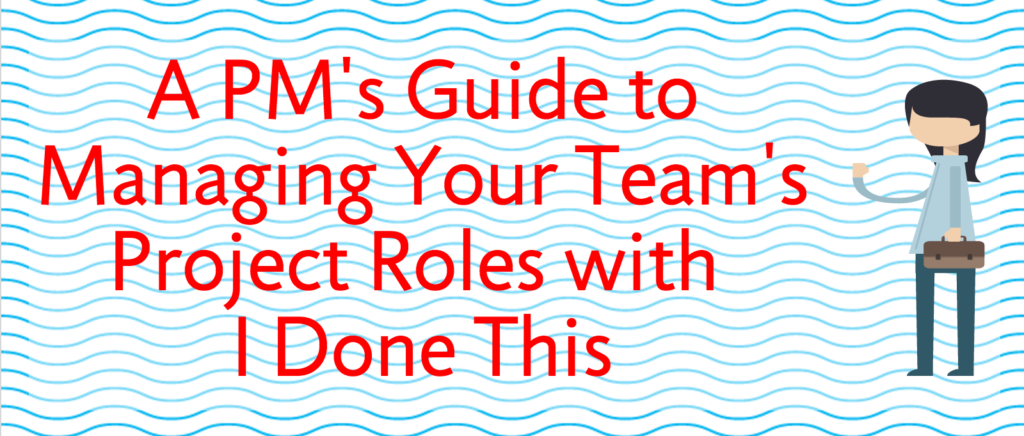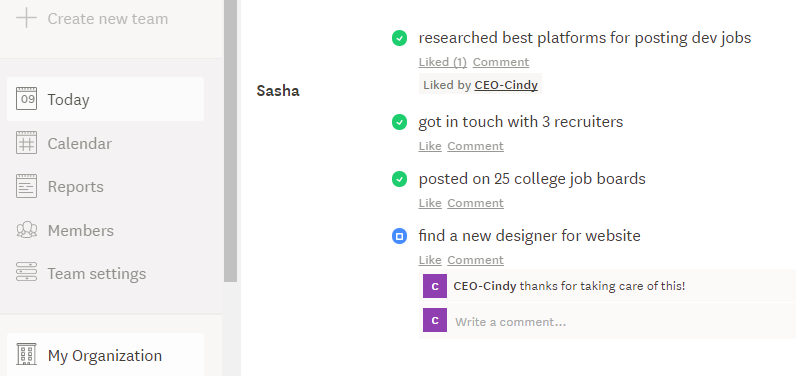Over half of all managers in the US are concerned about their team’s time management skills, according to an Institute for Corporate Productivity study.
As your employees’ heads are tucked behind computer screens and they’re clacking away on the keyboard, it seems near impossible to know how they’re spending their time. Are they in a private Slack channel chatting away about the new hire, or are they working? Should the project you assigned Linda take as long as it has? And if you don’t know what your local employees are up to, you can forget about getting insight into your remote employees time management habits.
In the internet-driven workplace, transparency feels like a pipe-dream. Not only do you have no way of telling whether your employees are slacking off, but you can’t even tell if hard-working employees are being tripped up by obstacles outside their control. The natural response to this issue is to micromanage and hover over their shoulder, but you want to empower your employees in their project team roles, not control them.

I Done This gives your whole team transparency without any of the negative side-effects. Here’s how.
Assign Problems, Not Solutions
When employees are given mindless tasks, they feel like cogs in the machine. They’re just following orders and don’t get to think for themselves. But this stunts growth and makes employees disengaged—a problem afflicting 70% of US workers. When employees are disengaged they have no reason to work hard or efficiently.
Instead of delegating tasks to your employees, delegate problems for different project team roles to solve on their own. For example, instead of telling your office manager to post a job ad on Indeed, tell her it’s her responsibility to find your next designer. This empowers them to think deeply, step outside their comfort zone, and ultimately improve themselves as employees and people.
Now that’s a perk. Not to mention, it’ll take some decision-making off your plate, so you can better allocate your own time.
Use I Done This 2.0 to see how far along your employees are at finding solutions to problems, not as micromanaging tools. You can do this by having a process where employees put “problems” into check boxes, and all steps towards achieving those problems as “dones.” Then, if you want, you can always add input or a friendly thumbs up.

Transparency is a Two-Way Street
Transparency is a word that’s thrown around startups a little too easily. It’s often misused to give managers an excuse to know every little thing that an employee does in their project team roles. They want to know what’s happening over email, the water cooler talks, and even what tabs populate their computer screens. But the purpose of transparency isn’t to increase a managers’ ability to micromanage—it’s to foster collaboration.
Set a time management example, by offering employees transparency into how you spend your own time. They’ll see that you’re working just as hard as they are and will be inspired to make that apparent. It will also give your employees an understanding of how everyone’s work relates to each others’ and to your work. That way, your team will work towards a unified goal that is bigger than them, instilling camaraderie and inspiring teamwork among your employees.
Use I Done This 2.0 the exact same way you expect your employees to use it, and engage them in it. This will demonstrate how useful it is to know what’s happening across departments and workspaces.

Be Responsive to Blockers
Three-quarters of people who quit leave because of their managers. With I Done This, you don’t ever have to worry about falling down the slippery slope of being too demanding. Instead, you can use your expertise where it’s the most effective—eliminating barrier and stumbling blocks for your employees.
Even if your company has a pretty flat organizational structure, there are still times when a manager has to call the shots. Use this privilege as an opportunity to give employees access to the resources or people they need to be great at their jobs. Basically, turn yourself into a professional problem-solver.
I Done This 2.0 has a new blocker feature, which serves as a red flag. Any employee can type in any blocker— whether they don’t have some required information, or there’s a bottleneck in the process—and then the whole team can see it. This will let you find small problems as they occur, and address them before they grow out of hand.

Be a Facilitator
As Steve Jobs once said,
“My model for business is The Beatles. They were four guys who kept each other’s kind of negative tendencies in check. They balanced each other and the total was greater than the sum of the parts. That’s how I see business: great things in business are never done by one person; they’re done by a team of people.”
Empower your employees to do what they do best, help them grow, and you’ll make the whole team stronger. Your job as a manager isn’t to delegate and watch, but rather to facilitate and reinforce. In return, your employees will do the same with you, and you’ll be shocked at how effectively your team will be able to become greater than the sum of its parts.
